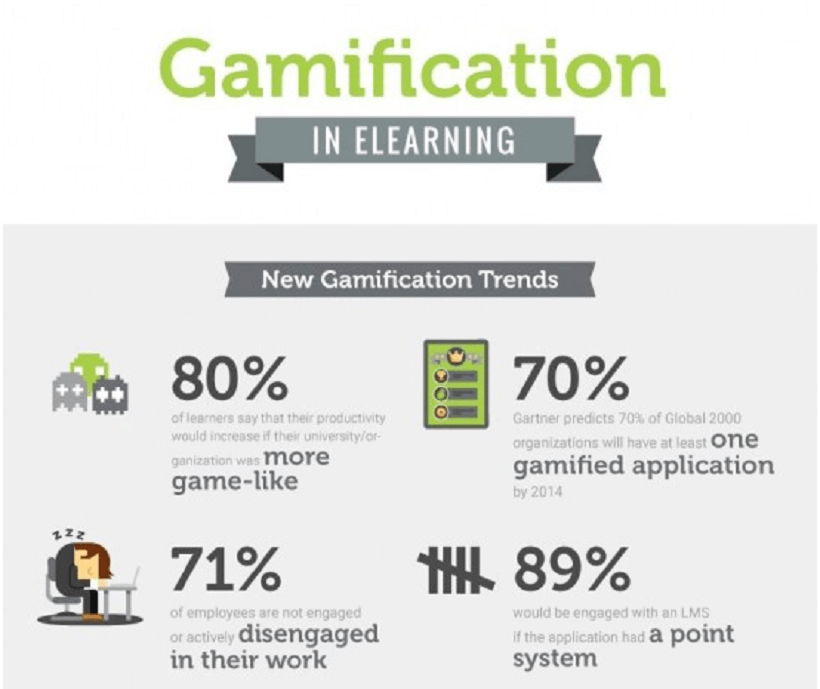How To Create eLearning Experiences That Stick
Each one of us has participated in an eLearning course, webinar, or online training event that we forgot as soon as we logged off. Every piece of information simply slipped out of our minds, like a sieve, through no fault of our own, while other eLearning courses stuck with us long after completion. This particular eLearning experience just wasn’t memorable enough to leave its mark. As eLearning professionals, it’s our responsibility to avoid this at all costs. We have to design eLearning experiences that stick, regardless of the subject matter or the background of our learners. In this article, I’ll share tips and tricks that you can use to create eLearning experiences that your learners aren’t soon to forget.
- Application of knowledge.
If you want your learners to truly remember what they have learned, they must actually apply the knowledge they are acquiring throughout the eLearning course. Real world scenarios, simulations, and games are all learning activities that give them the opportunity to apply what they have learned and tie the subject matter to real life benefits and situations. Application of knowledge also involves repetition, which is known to boost memory. - Link new concepts to previously acquired knowledge.
As human beings, we have a natural instinct to relate new concepts to ideas that we have already learned and stored in our brains. For example, if we are learning a new task, we automatically search our memory banks to find skills or similar tasks that might help us to master the new one. As such, linking new concepts to previously acquired knowledge can make your eLearning course more memorable. Integrate real world examples or analogies that help your learners connect one idea or concept to another, so that they are more likely to commit it to their long term memory. - Create emotionally compelling stories.
Stories have a way of stirring our emotions and helping us to connect. When we read a story that is emotionally compelling, we tend to remember the characters and concepts involved long after the fact. We relate to the situation or challenges and begin to reflect upon our own feelings or struggles. This automatically makes the subject matter an eLearning experience that sticks to our brain, because we are connecting with it on a profound level. It has power now because it is not only tied to our minds but also to our hearts. When creating such stories, however, it’s important to keep in mind the goals and objectives of the eLearning course. Always ensure that the plot and characters tie into the core ideology of the lesson, or else it won’t be of any value to your learners. - Encourage reflection after each module.
Upon completion of each lesson or module, encourage your learners to reflect and review the concepts and ideas just presented. This will give them the opportunity to fully absorb all of the key takeaways before moving onto the next lesson. As a result, they will commit it to their memory and they will able to recall the information easier at a later time, when they really need it, rather than moving onto the next lesson before they’ve had a chance to comprehend previous concepts. - Avoid cognitive overload by keeping it clear and concise.
Keep your text blocks concise by breaking lengthy paragraphs into bullet points, divide information into bite-sized lessons or modules, and highlight key pieces of information to avoid cognitive overload. If there is a concept that may be more complicated, try to use charts or graphics to illustrate the steps or ideas involved. Ultimately, all of your content should be clear, concise, and geared toward achieving eLearning objectives. Remember that extraneous information and visual imagery are just distractions for your learners. - Integrate collaboration activities into your eLearning course design.
Social learning gives your learners the power to interact with their peers and engage in an interactive and immersive learning process. When they collaborate with their peers to complete an assignment or reach out to them through social media sites, they are more likely to remember the eLearning experience. They can also benefit from the previous experience and knowledge of their peers and get the additional support they need to expand their comprehension of a topic or idea. - Learning is a marathon, not a race.
It’s true. Learners typically don’t have an unlimited amount of time to participate in an eLearning course or online training event. They may have other commitments that prevent them from participating on a weekly basis, for example. However, it’s important to remember that learning is not something that should be rushed. It is a marathon, not a race, especially if you want the learning to stick. It’s best to break modules down into digestible chunks and spread them out over time, rather than forcing an abundance of information upon your learners all at once. Give them a chance to acquire and absorb the knowledge and skills before moving onto the next module, so that they can save it in their memory banks for later use.
Use these tips to develop eLearning experiences that stick, giving your learners the opportunity to put their knowledge to use outside of the virtual learning environment and achieve the real world benefits that your eLearning course can offer.
One of the most effective ways to make your eLearning course more memorable is by integrating pervasive eLearning experiences into your eLearning course design. The article 6 Tips To Create The Perfect Pervasive eLearning Experience highlights how you can offer your learners the benefits associated with pervasive learning in a structured eLearning environment.








